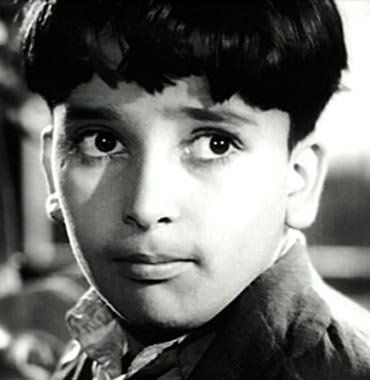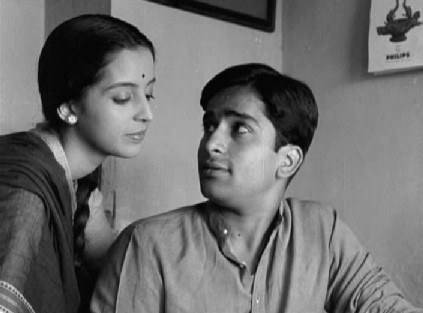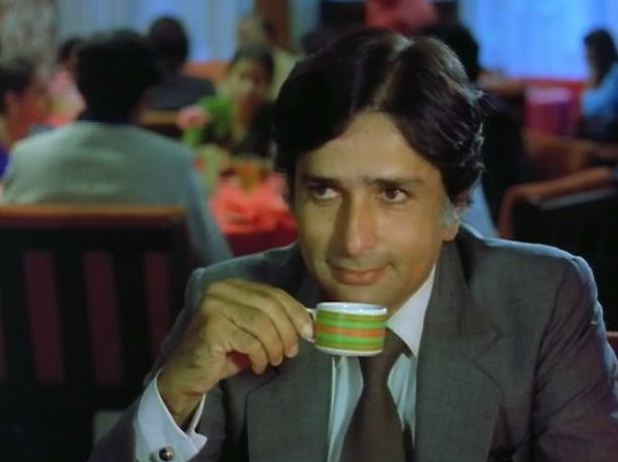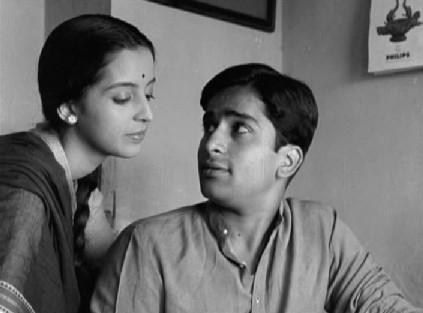In the last two days, I have seen the famous confrontation scene between Amitabh Bachchan and Shashi Kapoor from Deewar (1975) over a dozen times. That iconic dialogue which wrote off the all the successes of the world with just four words, “Mere paas maa hai!” So iconic is that dialogue that my roommate who doesn’t really follow Hindi films knew it. As the news of Shashi Kapoor’s death flowed in, this scene was the most obvious choice to establish a connect with the viewers of today.
Amitabh Bachchan and Shashi Kapoor acted together in 16 films, mostly as siblings. In the 1970s and 80s, the pathos of the angry young man of Amitabh would often be contrasted with the jovial charm of Shashi Kapoor. So Shashi was the boss and Amitabh the servant in Namak Halal. Shashi was Ravi, who went to school and became a police officer, because his brother Amitabh (Vijay) polished shoes and carried loads at the port in Deewar. In Trishul, Shashi was the heir to a successful business empire inherited from a father, whose illegitimate son was Amitabh. Shashi Kapoor’s privilege was needed to bring out the angst and suffering of Amitabh.

But this wasn’t the Shashi who captivated our minds. The above movies belonged to Amitabh Bachchan, singing his glory at the top of their voice. To know the real Shashi Kapoor, you will have to go back to 1951, where he played the childhood part of Raju in Raj Kapoor’s classic Awara. Playing the younger version of his real-life brother Raj Kapoor, Shashi Kapoor oozed vulnerability and innocence. Even before that, he had worked as a child artiste. But the image of a young Raju looking at a piece of bread inside the prison and laughing away at the irony being jailed for stealing bread, is quite inerasable. He wasn’t just another child artiste trying to fill the first 20 minutes of a film before our hero could take over.
Shashi Kapoor grew up to play a young hero, symbolising the innocence that prevailed in a young nation state. When a series of his early films such as Dharmputra, Prem Patra, and Char Diwari failed to take off, actress Nanda came to his rescue by acting opposite him in the 1965 blockbuster Jab Jab Phool Khile (1965). It was a time when actresses held enough clout to make a movie work for the hero. The audience were won over by the young shikara driver from Kashmir unable to reconcile with the norms of urban life. He was a graduate underemployed as a driver in Waqt (1965), not even trying to bridge the class divide with his lover for he knows it will never happen.

Even before he turned producer in the 1970s, Shashi had done stellar work with Merchant Ivory Productions. The production house was launched with the motive of making Indian films in English for an international audience. Watch him fumble with the early days of domesticity and married life in The Householder (1963) and you know what it means to be confused, vulnerable and lovable at the same time. Several collaborations followed with Merchant Ivory and by the end of 1960s, he had experienced both commercial and experimental cinema.
But that doesn’t mean he was pitch perfect in those roles. Shashi Kapoor lacked the histrionics of a Dilip Kumar or Balraj Sahni. Rajesh Khanna romanced better than him and he never could look angry like Amitabh. But Shashi Kapoor did something that none of the top billed stars of the silver screen did in the 1970s.

Even when he was the darling of glamour magazines, Shashi Kapoor treaded a different path when he turned producer. While he appeared in commercial potboilers like Duniya Meri Jeb Mein, Deewar, Chor Machaye Shor and Shaan, he joined the wave of parallel cinema, working with the likes of Shyam Benegal, Govind Nihlani and Girish Karnad. The presence of actors like Shashi Kapoor and Rekha in parallel cinema gave those films much needed visibility. As the angst ridden Karan Singh of Shyam Benegal’s Kalyug (a modern day retelling of Mahabharat in a corporate set-up), Shashi reprised Karna and brought out the anguish and added his own loneliness to it. He even played the foolish but obsessive lover in Girish Karnad’s sensuous ode to the Sanskrit play Mrichchakatika in Utsav. Aparna Sen marked her directorial debut in his production 36 Chowringhee Lane (1981).

If that wasn’t enough he used his star appeal and the deep love for theatre cultivated by his wife Jennifer to set up Prithvi Theatre, one the most coveted and famous performance venues in the country. After all, theatre was a legacy he received from his father Prithviraj Kapoor and Jennifer got it from her father Geoffrey Kendal (who owned the travelling theatre company Shakespeareana). Prithvi Theatre was their labour of love and it has endured to this day.
There have been several stars and superstars in Hindi cinema. But most of them have been consumed by their stardom and gloated for the rest of their lives in that glory. But very few have, like Shashi Kapoor, given back something meaningful to the world of art, which created them in first place. He promoted unconventional movies as a producer. The institution of art he created has outlasted him. This is a rare feat in a world where the greatest of institutions collapse with the exit of their creators.

A very nice tribute to the most handsome Sadhi Kapoor!! I liked the way it is presented!
Congratulations!!!
LikeLiked by 1 person
Thanks a lot, Ma’am!
LikeLike